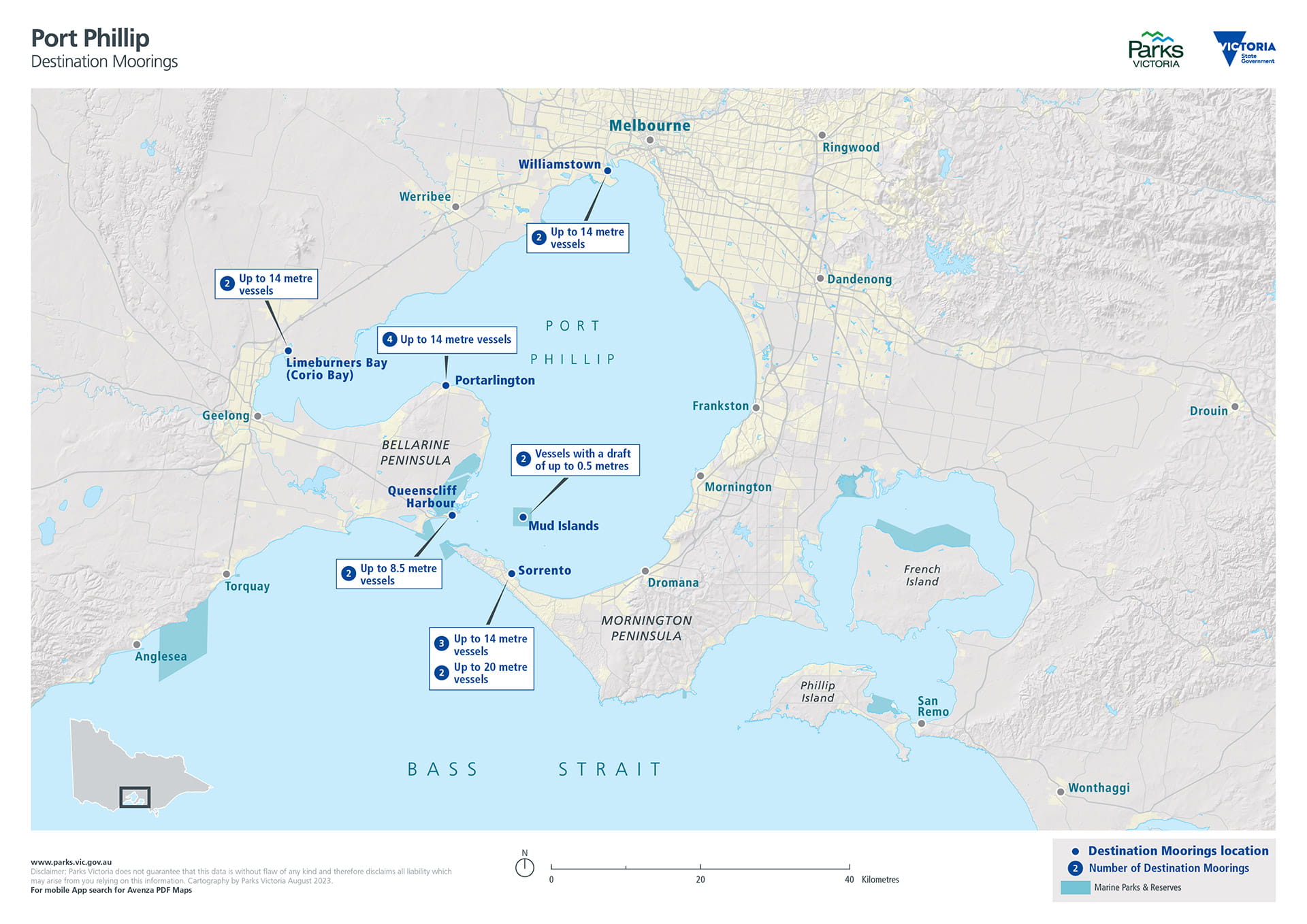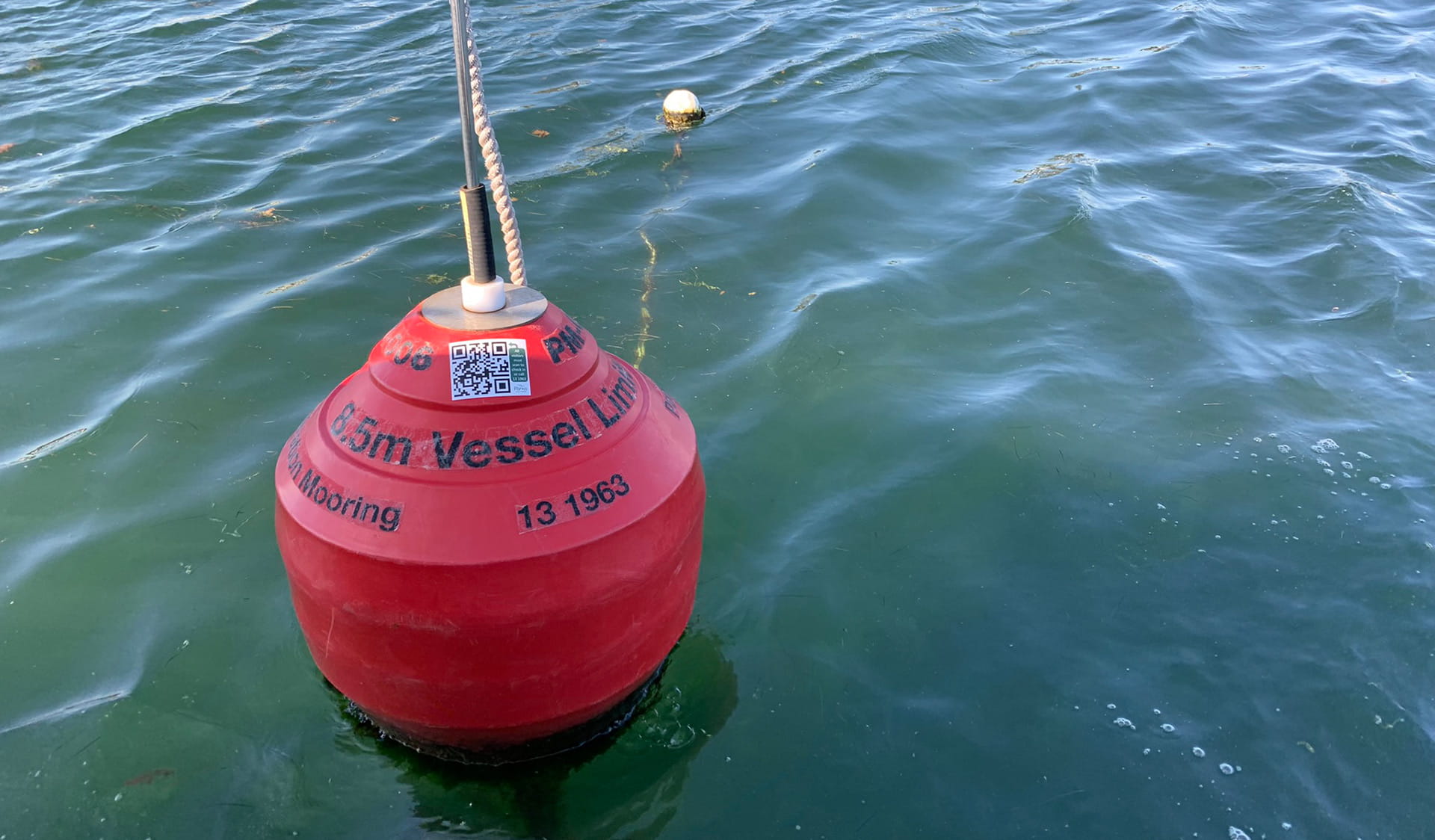Destination moorings
Parks Victoria offers free access to 17 destination swing moorings in six locations around Port Phillip for public recreational use. These moorings have been designed to reduce environmental impact and provide convenient short-term access to some of Victoria’s favourite locations.
All destination moorings, with the exception of the Mud Island and Portarlington moorings, are for short-term (maximum 48 hour) lengths of stay.
Mud Islands moorings are for sunlight hours only. Portarlington moorings are for a maximum of 5 day stays within a 14-day period.
Accessing a destination mooring
There are a total of 17 destination moorings in six locations across Port Phillip: Queenscliff Harbour (2), Portarlington (4), Limeburners Bay (2), Williamstown (2), Sorrento (5), and Mud Islands (2). These destination moorings are for use by recreational boaters for short-term (overnight) lengths of stay.

Destination moorings are offered on a first-come, first-served basis and are not available for booking. Parks Victoria cannot ensure exclusive use during your stay if you move your vessel from the mooring. When arriving at your chosen location, you should observe information identified.
Once moored, it is required that you check in by scanning the QR code located on the mooring with your smartphone or by calling the Parks Victoria Information Centre on 13 1963.

Mud Islands moorings
Mud Islands moorings are shallow, and only suitable for non-keeled vessels with a draft up to 0.5 metres.
Mud Islands Destination Moorings are for daylight use only.
Environmentally-friendly moorings
All destination moorings offered by Parks Victoria are designed to be environmentally-friendly. Conventional swing moorings can lead to damage of the marine environment, when the chain drags along the seabed as the vessel moves about with wind and tidal influences. This destroys marine life and vegetation underneath.
The design of environmentally-friendly swing moorings keeps components of the mooring off the seabed. By using a screw pin embedded in the seabed, a rotating swivel connection is attached to the anchor, with a floating rope leading to the top float buoy.
For locations and more information refer to the Destination Moorings fact sheet (PDF).

